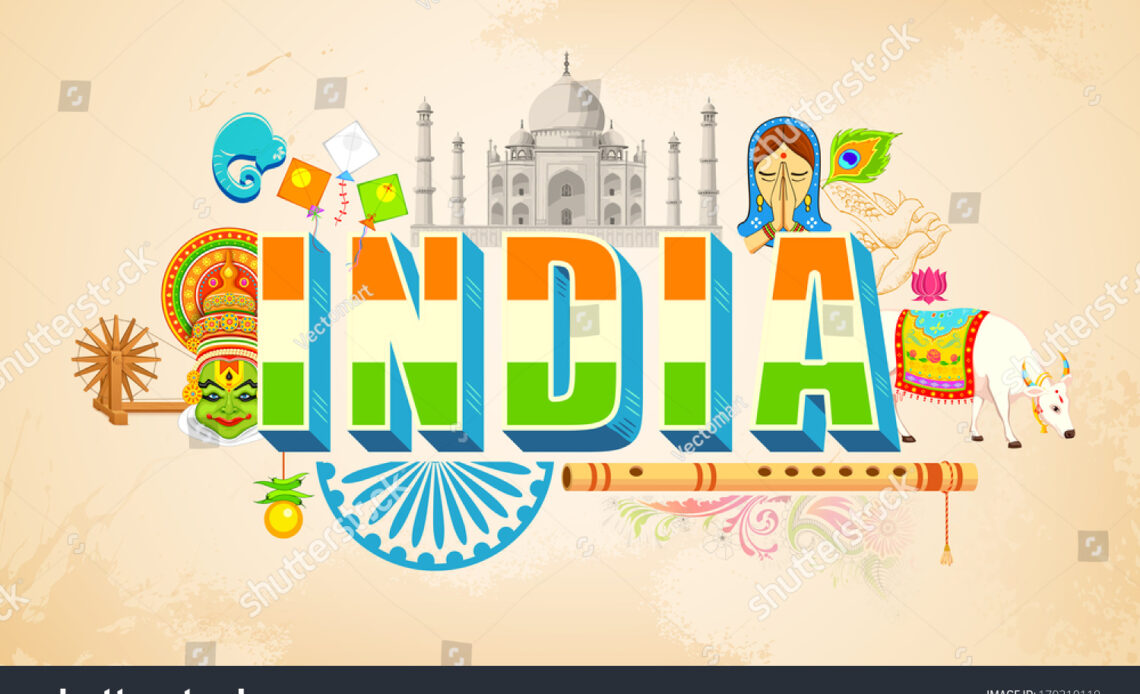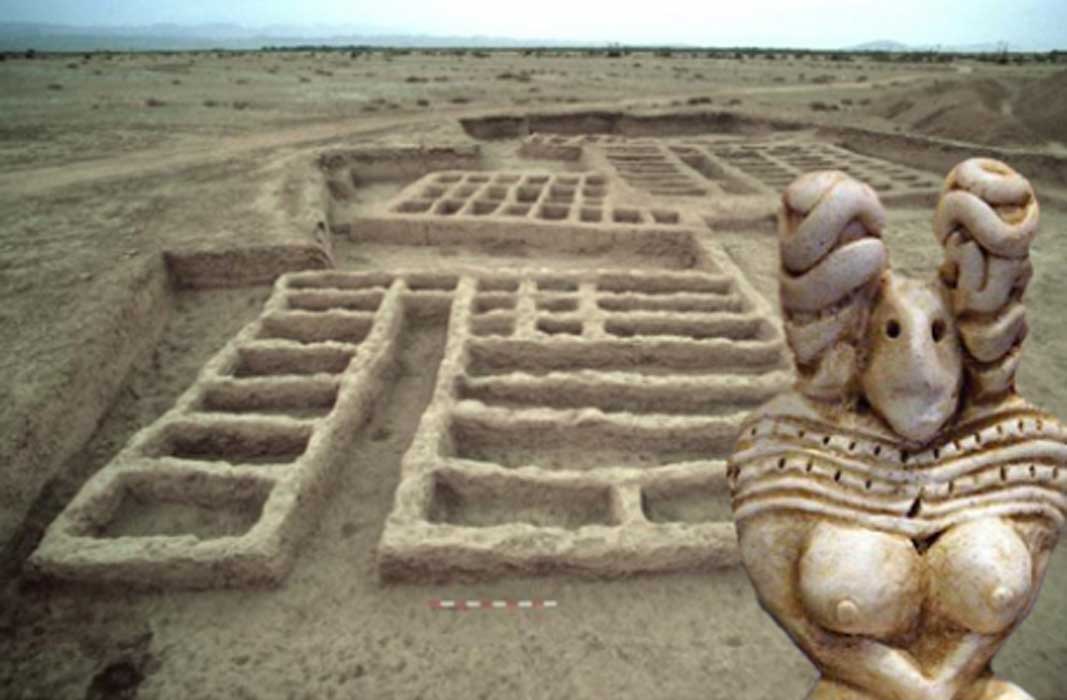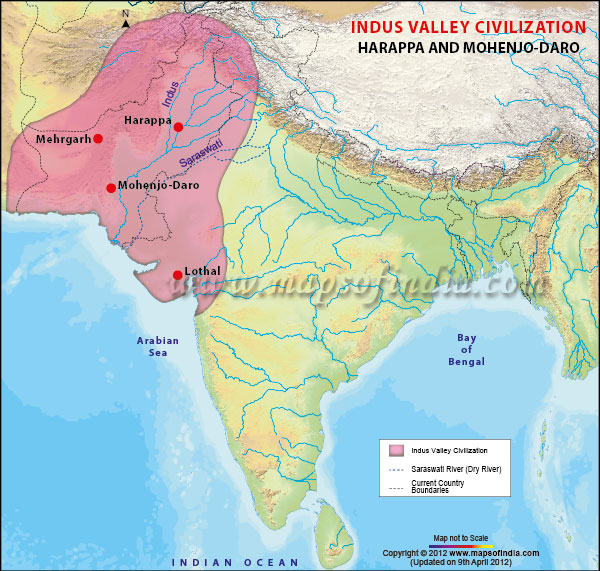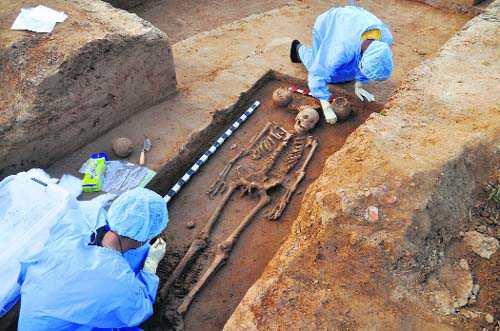
INDIA…the name is enough to give goosebumps. But, have we ever thought about what was the starting point of the Indian civilisation. What led to the development of so many races, cultures and languages. Also, so much is talked about about the Aryans and Dravidians. But, what was the proper sequence of all these events taking place? Today, we will deep dive into history to find out what and how of INDIA’s existence.
Emergence of Life on Earth
Let’s start from the very beginning. Life on our planet Earth started around 3.8 billion years (380 crore years). At that time, the planet earth used to be a cold planet and life didn’t even exist there. Scientists even believe that the earth used to be Purple at that time. Slowly, life started evolving on the planet, firstly on water and then on land with bacteria, algae, and moss. It was during this period only, that a high quantity of oxygen started creating Ozone (remember your high school lesson, Oxygen is O2 and Ozone is O3). This led to the formation of the Ozone Layer around the earth providing protection from Ultraviolet Rays. It further allowed more varieties of species to come up on the planet.
It was some 250 million years ago when the dinosaurs existed on the planet (yes the Jurassic Park era). They stayed for around 177 million years. Their end was marked by a mass extinction event, which scientists mostly believe was a volcanic eruption. As the dinosaurs got extinct, other smaller living beings started coming into being. Also, it is believed that Mammals used to live underground only till Dinosaurs were there. It was only existing on the ground only after Dinosaurs were gone. The very first evidence of humans coming onto the planet is 70 lakh years before.

Pic: The Probable face of Homo Sapiens
Humans, Ominia Species and Homo Sapiens
Now, let’s come to the arrival of humans, or at least those who went on to become humans. As the mammals started coming up, among them there were one Gamechanger species, which ‘resembled’ monkeys and belonged to the Ominent tribe. It had one common ancestor…the Ominia Species. They later spread into different species like gorillas, chimpanzees and also. This very species is considered to be the ancestors of humans.
Now, from there the Ominia species started dividing into further different species like Homo Neanderthals, Homo Erectus and the Homo Sapiens, the last one of which is us. The other two species couldn’t survive for long. Homo means the ‘same‘ and Sapiens means ‘wise‘. The main features that are marked with Sapiens are standing on two feet, having opposable hands, having larger brain size and having the ability to ‘talk’ in languages. One of the MAIN features of Homo Sapiens is the fact that we always had the urge to travel, gossip and explore. This really helped the then Homo Sapiens to evolve into what we are today.
The EVOLUTION of Species
In 1836, Charles Darwin travelled to South America and Australia. He started observing the species and environment there. His main interest was in geology, but slowly the living beings and species there also started grabbing his attention. He observed that the same species is having different features on different islands. Such as the body size or way of movement of birds on the two islands are differing. After researching this for several years, he found out the reason is ‘choices’.
Every species chooses different ways to survive based on the circumstances which slowly become their traits and over time become the features of that species. In this way, species kept on evolving by developing something different from others. Homo Sapiens originated in Africa and from there they started travelling to different parts including the current INDIA. The first batch of Sapiens that reached India around 65000 years ago is known as the FIRST INDIANS.

Pic: The ONGA Tribe in Andaman and Nicobar Islands
The Arrival of FIRST Indians
But the First Indians were very different from those who are our direct ancestors because between the First Indians and our direct ancestors, a huge level of evolution took place. The reason for that was the huge influx of migrants in India throughout the course of history. For an instance, during the 5th century, 12000 Indian musicians were invited by the Persian King. After going there, all the musicians actually ended up settling there. Just imagine, the level of evolution it would have led to in the Persian land with the Indian influx.
During an archaeological study, in Andhra Pradesh’s Kurnoor, some ashes were found dug inside the ground. The ashes belong to a huge volcanic eruption that took place in Indonesia’s Toba. Because of that, the place is known as JWALAPURAM…Land of Fire. Under the ashes, many tools belonging to ancient times were found. And…guess what these were the same tools that were used by the Homo Sapiens in Africa. This confirmed the existence of African migrants at the location. Further DNA evidence also confirmed the fact that the African migrants only, were actually the First Indians. They settled, adapted and evolved after coming here. They are scientifically called the ANCIENT ANCESTRAL SOUTH INDIANS.
The Development of Agriculture
The species that is today considered the MOST closely related to the African migrants is the ONGA Tribe that is found in the Andaman and Nicobar islands. The reason for that is that they have remained quite isolated from the rest of the African migrant group. While the majority of the migrants kept on evolving after mixing with other migrants, this particular group remained as ‘original’ as it was. So, traditionally the original INDIANS are only the Onga tribe people in Andaman and Nicobar islands. However, although the rest of us are very different from the African migrants, surprisingly, 50% of our DNA still matches that of our original African DNA.
Initially, all the humans were hunter-gatherers, and so were the African migrants that came here. Till around 50,000 years this was the status quo (so everyone was a non-vegetarian then…HA HA). But, the concept of agriculture changed everything. It started 9000 years ago. Initially, mainly wheat and barley were grown and sheep and goats were domesticated. Slowly, rice, fruits and vegetables also came up. With agriculture taking care of people’s food, people now had more time and started making houses. In this way, civilizations started coming up.

Pic: The Images of ancient Mehrgarh settlement
The Civilisation in MEHRGARH
When we talk about civilisations, the first name that comes to our mind is the Indus Valley civilisation. But, the Indus Valley civilization was NOT the first civilisation to practice agriculture. The first civilisation to practice agriculture was in 7000BC…the Mehrgarh settlement, which now happens to be in the Balochistan region of Pakistan. During a French archaeological mission in 1976, human and cattle skeletons, cotton remains as well as agricultural tools were found in the region. So, that proved the existence of the Mehrgarh settlement. Scientists even believe that they also developed new types of pottery and discovered metals, which finally led to the Bronze Age.
The Farmers from IRAN
A group of people from the Zagros region in Western Iran came to Mehrgarh place. They mixed with the original African migrants and birthed a new race, which surely was the ancestors of the Harappan Indus Valley civilization. This was confirmed after the DNA tests confirmed that the population in the Mehrgarh settlement was a mixture of two different populations. One of the two populations was that of the ‘First Indians’ and the other that of these ‘Iranian Farmes’. The DNA evidence from Rakhigari also confirmed the same.
Also Read: My Blog on the functioning of the territory of ANTARCTICA
The Indus Valley Civilisation
So, if we look at the whole chronology. The first Indians came 65000 years from now, the Mehrgarh settlement some 9000 years ago in 7000 BC, and then the Indus Valley civilisation came up around 5000 BC. Indus Valley civilisation as many must be knowing was an extremely developed and planned civilisation.
The people of the Indus Valley used bangles used clay pots, which looked like today’s HANDIS. They ate a curry having brinjal ginger, turmeric and salt. They used ‘lota’ in bathrooms, and worshipped the Peepal tree. By 2000 BC, the Indus Valley civilisation had spread from current Pakistan to UP, and from current Aghanistan to Gujarat.
The civilisation traded with several other civilisations like Mesopotamia. Harappan seals that have been found in Syria and Turkey confirm the exchanges. There is evidence of Harappans travelling to South India as well around 3000 years ago. Indus Valley lived for around 4000 years. In 1600 BC, huge drought and natural calamities brought an end to the Indus Valley civilisation.
It led to the starving and killing of many people. After that, the Harappans started migrating to different parts of the country. Now, the culture in the Aryan era and the Harappan era are very different from each other. The way they lived, the gods they worshipped, and the animals they kept were all different. Also, the Aryans didn’t create cities like the Harappans did. So most probably, the Harappan culture mixed with some other people in the country and then finally got finished. It was followed by a new wave of immigrants entering the country.

Pic: Map of Indus Valley Civilisation
The Spread of Languages
In the Harappan language, traces of the ancient Iranian language ‘Ilamite’ have been found. The Harappan language was so wide in nature, that it hasn’t been decoded till now. But scientists studied the south Indian languages like Tamil, Telugu, Malayalam, Kannad, and Tudu. Guess what, there are links to the Ilamite language in it. For example, small is referred to as ‘puttu’ in both Iranian as well as south Indian languages.
Another fact, English and Sanskrit belong to the same family. This main language birthed several Indo-European languages including English, Sanskrit, German, and Greek. One strong theory says that it was the Harappans or Indians who developed the core language. And, as they travelled through the world they spread the language into Europe as well. In 1500 BC, as the Harappans were migrating to different parts of the country, languages were developing across South India as well. It was during this time, that the Tamil language came up which is considered one of the OLDEST languages in the world.
The Emergence of ARYANS
After the end of the Indus Valley civilisation, a new wave of migrants entered India. They came from Central Asia and started residing in the region of Kazakh step in current Kazakhstan. They are known as YAMNAYAS. As per the evidence, they were religious people, who lived in villages and practised animal husbandry. DNA evidence shows that all of us today have the DNA of this Yamnaya community. Not just this, the Europeans have the same Yamnaya DNA as well. It shows that both the Indians and Europeans have the very same ancestors, and the ancestors originated from the Central Asia region.
These ancestors travelled both towards India as well as Europe, which finally led to the forming of two different civilisations. In India, the Yamnayas came and mixed mainly with the Harappans (very little with Dravidians also). This led to the formation of a new race called…ARYANS. The Aryans developed their new culture, wrote scriptures and practised religion. Most probably, they were the ones who wrote the Vedas which led to the formation of the Hinduism religion.
Also Read: My Blog on the British Monarchy in the 21st century
Aryan and Dravidian concepts
ANI (Ancient North Indians) and ASI (Ancient South Indians). These two terms can be scientifically associated with the Aryans and Dravidians. As the Harappans travelled the country, some mixed with the Iranian farmers which birthed the ANIs and some mixed with the African migrants and birthed the ASIs. In this way, the two different races came into existence. So, we can say that Harappans are the ancestors of both Aryans and Dravidians…and also ours. Also, there was one Austro-Asiatic and Tibetan-speaking ancestry among North Easterns who got mixed with the race coming from the Chinese side. This gave birth to the race of the Indians from the northeast.
But, for a fact NO ONE today is completely an ANI or an ASI. The reason is there has been so much mixing of different races.
There is an Aryan Invasion theory as well. It says that the Aryans came and killed all the existing races and established themselves. But, there are not many proofs of this. It is believed that Aryans were not invaders, but the Harappans only actually went on to become the Vedic people. Tony Joseph, the writer of Early Indians says that even after Aryans came, different races kept on mixing and staying together. But, suddenly around 100 BC, the mixing and marrying across races stopped. The reason is considered to be the introduction of the CASTE System which divided society once and for all.
Pic: Scientists studying the ancient remains
What makes us INDIANS today?
So, after running through the complete timeline, we have understood the sequence of events that has brought us here. If we look practically, the whole country is made up of MIGRANTS, and then we see people demanding and presenting baseless laws against migration. The country kept on absorbing every race and culture that ever came here. It kept on diversifying and finally what became what we have in front of us. But, if someone asks what is that one thing which has truly led to the formation of INDIA in the form it is today. In my opinion, the true answer would be DIVERSITY and INCLUSIVITY, the very two concepts that are under the hammer today.


